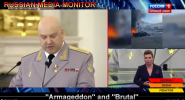Since March, we've been tracking Belarusian military activity. There are some important points to be made. Apart from
@MotolkoHelp and
@Rochan_CONS, no one else does this as the Belarusian Armed Forces are relatively weak, and apart from Luka's rhetoric, there's nothing there.
The Belarusian Armed Forces are largely a mobilisational force. Their manpower is at around 50-60% of the required peacetime strength. To reach 100%, they'd need to mobilise at least 20k men. Operationally, they are subordinated to the Russian Western MD.
They don't have Land Forces Command, and they do not conduct exercises above battalion level, but even these are rare. They mostly train platoons and companies. More forces are deployed for Russia-organised drills such as Zapad or Union Shield.
Currently, they maintain some presence near the border with Ukraine (1k km long). Size varies depending on the source. Ukrainians claim Belarusians deployed up to 7 BTGs, but we assess these are actually CTGs, which would correspond with their level of training and capability.
But,since April, Belarusian exercise tempo has been the highest since the end of the Cold War. Minsk tested all capabilities as if it was preparing to go to war: the creation of territorial def battalions, mobilisation, and postal service to deliver orders (and draft notices?)
You name it, they tested it. The "problem" is that these drills were, again, small and did not usually go beyond a city or an oblast. But it allowed them to see what works and what does not.
There are three possible explanations behind this behaviour:
1 ) Prep for a NATO attack
2) To tie up Ukrainian forces near the border to prevent their deployment to other areas
3) Prep for an attack on Ukraine.
Currently, we do not know which scenario is more likely, although our focus is primarily on the latter two. The Belarusian regime is more secretive than its Russian counterpart, so we will need to be reactive to what Minsk does. It is very difficult to forecast anything
However, given that the Belarusian Armed Forces are a mobilisation force, given they would need to deploy a lot of personnel towards the border, create concentration areas, etc., I am certain we will be able to pick up changes in the Belarusian posture and provide strategic warning when an attack could happen (if at all).
One more thing:
In recent weeks we have seen increasingly threatening but still defensive Belarusian rhetoric towards Ukraine: "Don't attack or else". This could be a prep for a false flag attack.
.





